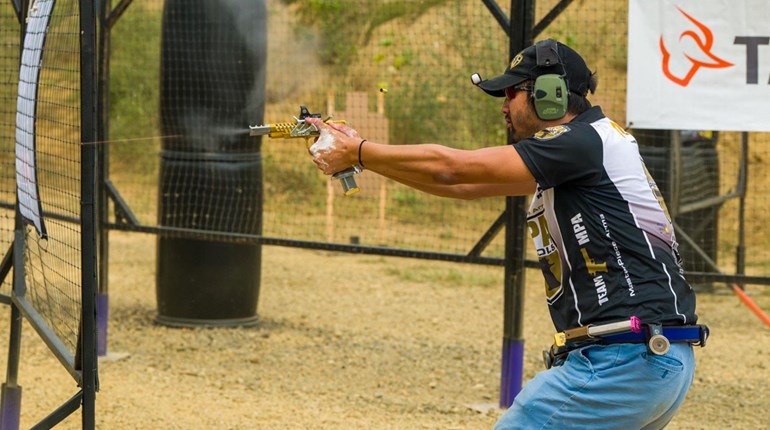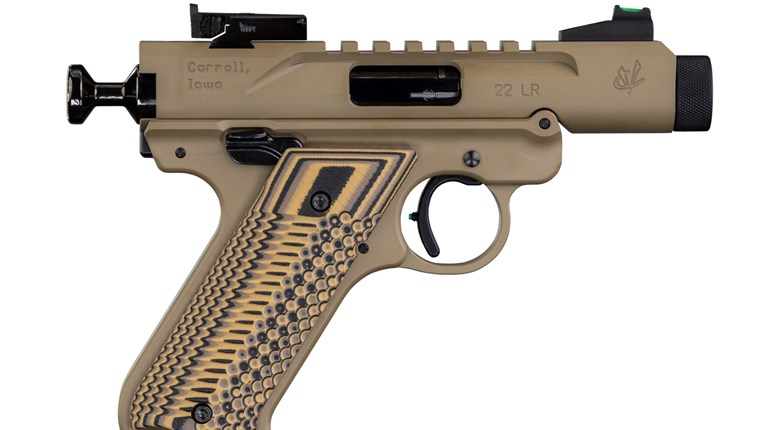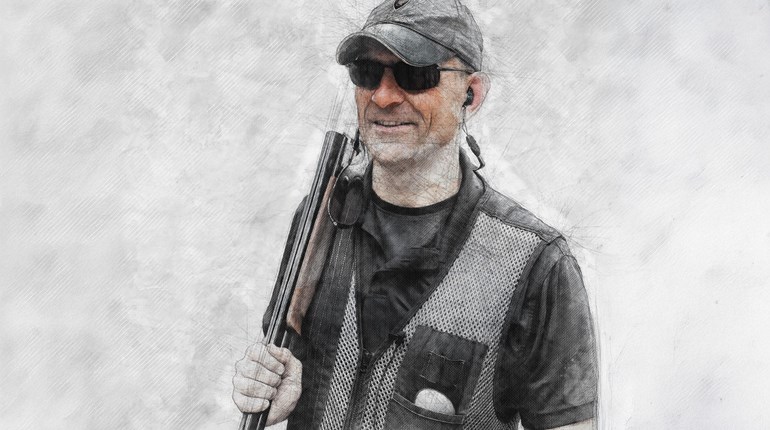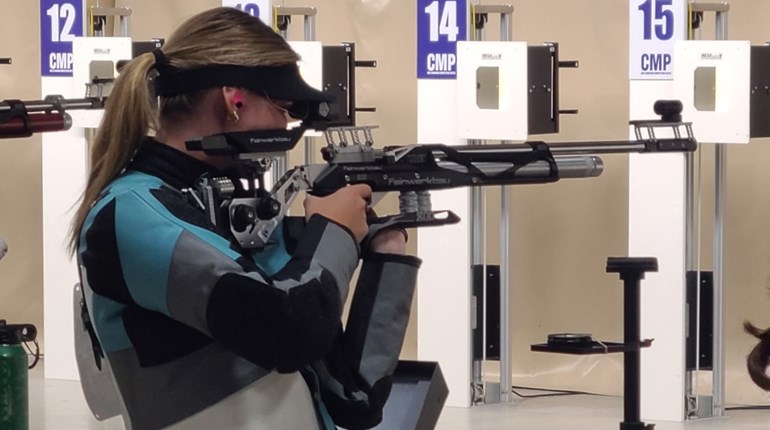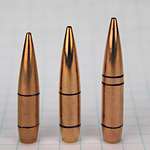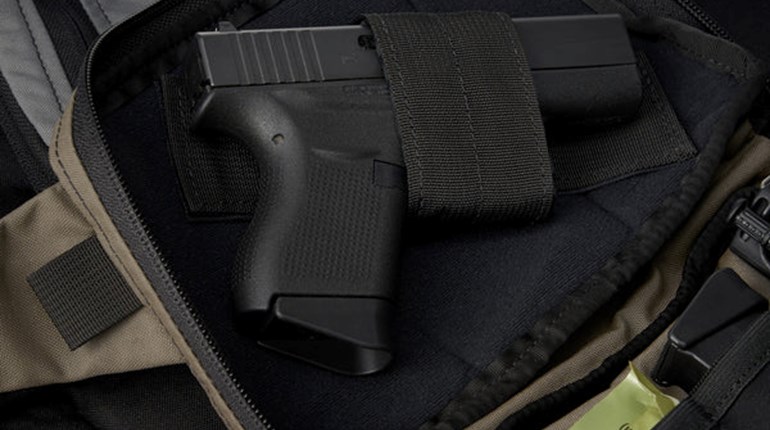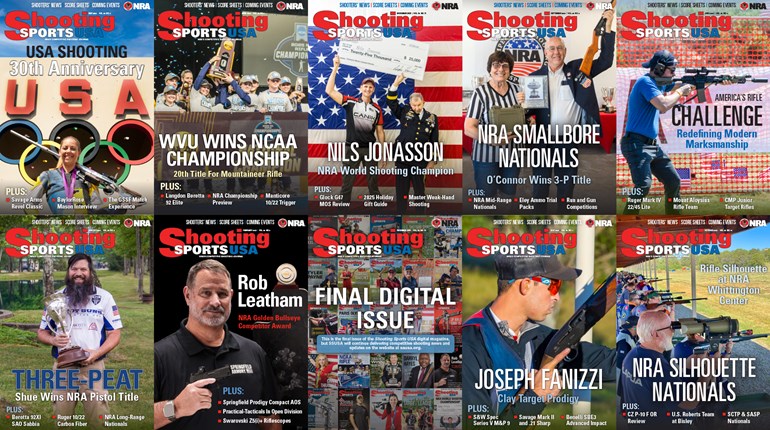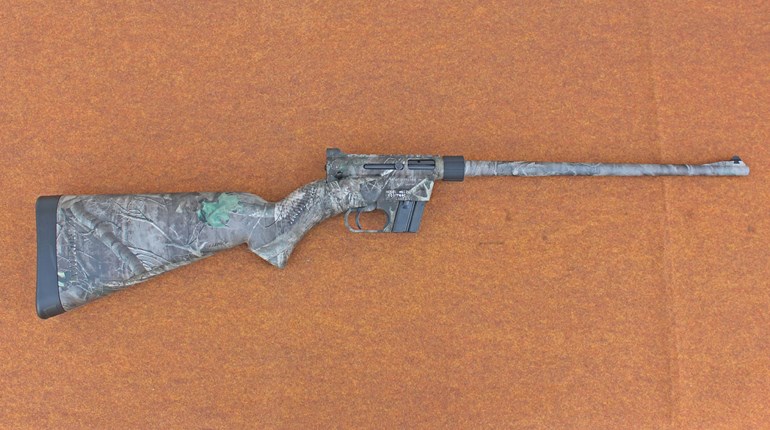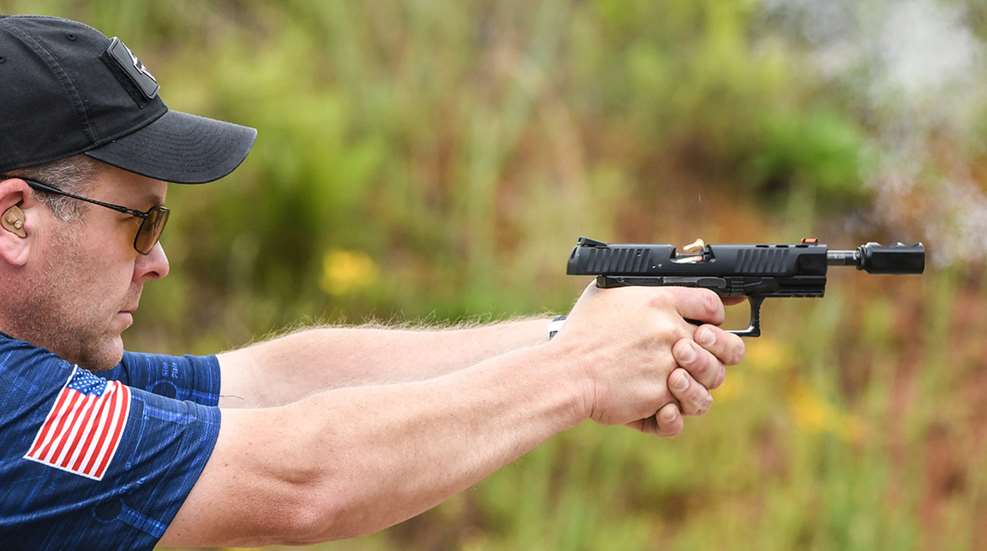
Steel Challenge has enjoyed explosive growth over the last few years, with 2019 having almost 80,000 results reported. The competition was founded in 1981 by Mike Dalton and Mike Fichman. The idea was to have a shooting sport that was more TV- and spectator-friendly. Due to the simpler rules and the stages remaining the same year to year, Steel Challenge took off, and it became the match where new speed records were set each year.
From 1981 until 2011 the match had been held at Piru, Calif., and moved around from Frostproof, Fla., to St. George, Utah, next back to California (in San Luis Obispo) and finally settling in Talladega, Ala. In 2007, Dalton and Fichman sold Steel Challenge to USPSA.
While the intentions were good, Steel Challenge in the hands of USPSA at first did not do so well. There were efforts to increase participation, but it wasn’t until the classification system was established that we started to see a real increase in shooters.
Classification in Steel Challenge is based on peak stage times for each of the eight official stages. Classification comes from your total combined time of all strings on a stage compared to the peak stage time. For example, in Carry Optics on the stage “Accelerator,” the peak time is 11.00 seconds and my best time for the four strings is 14.35 seconds. And, 11.00 divided by 14.35 equals 0.766655 or 76.66 percent, which is A class for that stage. That is just one of the eight stages. My total time in Carry Optics is 112.09 seconds compared to a total Peak Stage time of all eight of 94.00 seconds, or an 83.86 percent for an A Class classification in Carry Optics.
There are 13 different divisions in Steel Challenge to compete in, and many of the firearms that are in use can be shot in multiple divisions. My 9mm 1911 is my Single Stack and Limited division gun, and my Carry Optics firearm is what I used to shoot in Open division. There are four rimfire divisions, two handguns and two rifles. The rimfire divisions are Open and Iron Sight Pistol and Rifle, with the only difference being the allowed use of an optic in the Open divisions. There are also two centerfire rifle divisions, using Pistol Caliber Carbines either with iron sights or optics. The rimfire and the rifle divisions all start from a low ready position, meaning no holsters are needed. The centerfire handgun divisions are all drawn from a holster.
The eight stages that make up a Steel Challenge match have been well established over the years, and present competitors with a unique challenge of both speed and precision. All of the stages consist of five steel plates shot from a shooting box. Four of the plates need to be hit before shooting the last plate, the stop plate. Only one stage requires movement (“Outer Limits”), where competitors move six feet from one box to another box after hitting two of the five plates, then finish by shooting the other two plates and then the stop plate. Total time is calculated using the best four of five strings (best three of four on “Outer Limits”). Initial classification is based on only four stages; after your initial classification is established, then every time you shoot any of the eight stages your times will be used in managing your classification.
During this growth, USPSA focused on bringing Steel Challenge more resources, with a dedicated website that was completely revamped last year. Members can manage their profiles, track their classifications and find matches and clubs to shoot at. There is also a classification calculator on the website that will help show you where you need to improve to move up. Plus, the Steel Challenge mobile app includes stages, a classifier calculator and other features to help members keep track of their performances.
In 2016, there were only about 80 active Steel Challenge clubs, now there are 257 affiliated clubs running matches. A Steel Challenge match doesn’t have to run all eight of the stages for their matches; alternatively, they can run a minimum of any two of the eight stages for a Tier 1, or what is considered a club match. A state, section or “championship” match is required to run six of the eight stages and is considered a Tier 2 match. Area, Region or National Championships (Tier 3 matches) are required to use all eight of the stages. Tier 4 is reserved for the World Speed Shooting Championship.
Is your club ready to start hosting Steel Challenge matches? If your club is already a USPSA club, there is no additional affiliation fee. Simply contact the office to get a SCSA club number. If you are a new club, then contacting Heather at the office is the first step. Complete the paperwork, pay the affiliation fee and you are all set.
What does it take to get going with stages? The biggest hurdle or investment up front will be steel plates, if your club doesn’t already have them. The plates used are:
- 10-inch round total for all eight stages = 9
- 12-inch round total for all eight stages = 20
- 18 x 24 inch rectangles total for all stages = 11
However, you don’t need to have enough steel to do all eight stages for a club match to get started. You can begin with enough to set up any of the eight and run only two, three or maybe four stages to get rolling. There are companies that sell whole sets, or enough to set up three or four stages. Additionally, check with a local fabrication company that can cut the plates for you. You may even have a club member who can do it, as well as make your bases and target hangers. Next, the only other expense is paint and wood to hang the targets on.
As far as running a match, if you pre-measure bays and pin them, setup is relatively easy. Measure the bay for the stage, pin it, cut your target stick heights and mark them. Then for the matches moving forward, you are just putting the targets back in place. The Indiana Section Coordinator Steve Wright, who has run the Area 5 SCSA Championship and his club match, has a great system. The bays are pinned, the wood is measured, cut and marked by stages and which target and stored in a wagon. The morning of the match they roll the pre-made stage to the bay and set it up. They can get all eight stages on the ground and be shooting in an hour.
The ideal squad for a match would be 12 guns, which is about three minutes per shooter, or 36 minutes per stage. To run all eight stages, it takes about five hours if you have 12 guns per squad. That would allow for 96 guns in a match. It seems most competitors are shooting two guns if they can, and most clubs are doing a $20 per first gun, $10 per second gun entry fee. So let’s say the ideal situation is 96 guns, or 48 competitors at $30 per competitor or $1,440 in entry fees. Your activity fee is only $1 per gun or $96 in this example, so the club is able to make $1,344, possibly a little less if you are comping setup crew or offering some other benefit for them.
Once you get past the startup cost of steel, stands, wood and paint, the expense to run a match is minimal. Stages are already designed, setup is quick and the match is usually easier to run than a USPSA match.
Learn more about Steel Challenge here, or contact [email protected] if your club is interested in conducting matches.
Article from the September/October 2020 issue of USPSA’s FrontSight magazine.
See more: Our Guide To Starting In Steel Challenge













